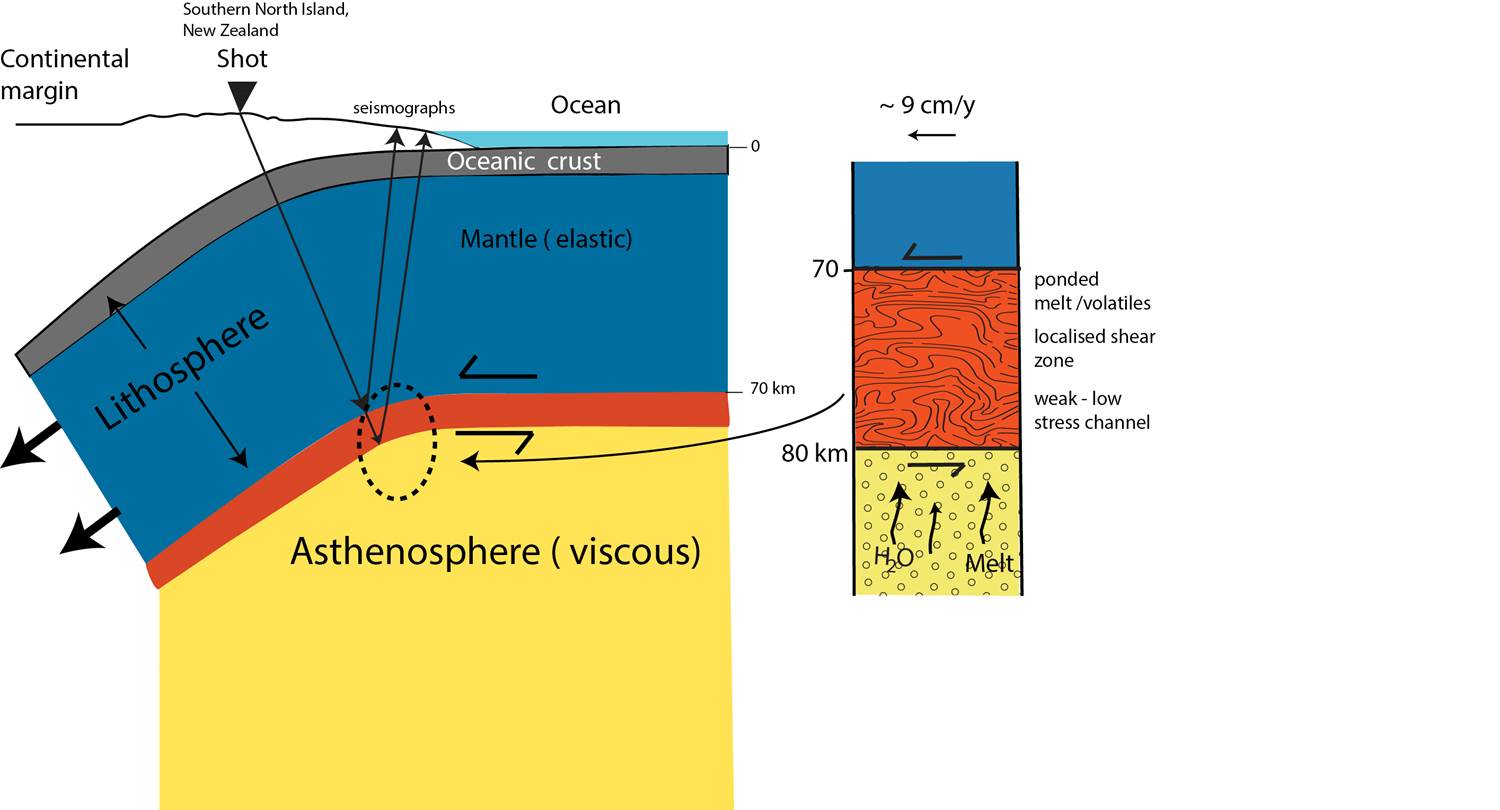
The bottom of one of Earth's rocky plates has been visualized in fine detail using sound waves from dynamite exploded deep underground, revealing a once-hidden channel of molten rock.
While the images are impressive in their own right, the findings could also provide insight into a long-standing question about the mechanics of plate tectonics, the theory that Earth's outer shell is divided into "plates" that slowly move over the mantle (the molten-rock layer above the planet's core) over millions of years, said study co-author Tim Stern, a geologist at Victoria University of Wellington in New Zealand.
In fact, the huge channel may create a soft spot that ultimately explains at least one rocky plate's movements.
Surprise find
Stern and his colleagues were trying to understand what was going on beneath the Earth's surface on the North Island of New Zealand, where a series of powerful earthquakes has struck in recent years. In this area, the Pacific plate is diving beneath the Australian plate at an extremely shallow angle in a process called subduction, Stern said. [In Images: How North America Grew As a Continent]
The team had placed about 0.5 tons of dynamite in several steel-encased bore holes along the subduction zone. When the dynamite exploded, it sent powerful sound waves into the holes. By measuring the reflected waves, the team could then visualize the top of the plate, about 12 to 18 miles (20 to 30 kilometers) beneath the surface.
"Much to our surprise, we got more echoes from much deeper," Stern told Live Science.
Sign up for the Live Science daily newsletter now
Get the world’s most fascinating discoveries delivered straight to your inbox.
By looking more closely, the team concluded the echoes had come from the bottom of the plate, about 45 miles (73 km) below the top of the plate.
The accidental discovery provided a much more detailed view of a tectonic plate's base than past methods, such as measuring seismic waves from earthquakes, Stern said.
In addition, the team found that near the bottom of the plate, the sound waves moved a little slower before being reflected. The researchers speculated that water or a tiny bit of melt from the Earth's mantle was pooling at the base of the plate, creating a narrow channel in the transition zone between the base of the plate and the upper portion of the mantle. The movement of the plate was further trapping this melt, creating a soft spot and helping the plate glide atop the mantle more easily.
"We think it's a sort of lubricant that allows plate tectonics to work," Stern said.
Plate motion
The findings could have implications for one of the big unanswered questions in geology: how the tectonic plates that make up Earth's outer shell move. One theory holds that currents of heat rise from the deep mantle, pushing upward on the continental plates and creating drag as these currents of heat cycle downward again. But the presence of a soft spot at the base of the plate makes it unlikely that enough drag force could be applied there to move the plates, Stern said.
Instead, the current findings lend greater weight to another theory, in which the heavier tectonic plates sink at their edges into the mantle at subduction zones, Stern said. That sinking creates a momentum that then tugs the rest of the plate with them.
"It's a cool or neat result in its own right, the ability to image such a fine structure at such a depth," said Simon Klemperer, a geologist at Stanford University, who was not involved in the study.
The findings also suggest that drag force from mantle convection is probably less important in the movement of tectonic plates than previously thought, and that the gravitational effects at the plates' edges may play a bigger role than thought, Klemperer told Live Science.
It's not clear yet if the mysterious channel, the soft spot, is unique to this particular subduction zone. There is some evidence for a channel underneath Costa Rica and on the continental plate that descends beneath Norway. But to show that sinking is more important in explaining how tectonic plates move, the team would have to show similar channels around the world at both continental and oceanic plates, Klemperer said.
The new study was published today (Feb. 4) in the journal Nature.
Follow Tia Ghose on Twitter and Google+. Follow LiveScience @livescience, Facebook & Google+. Originally published on Live Science.

Tia is the managing editor and was previously a senior writer for Live Science. Her work has appeared in Scientific American, Wired.com and other outlets. She holds a master's degree in bioengineering from the University of Washington, a graduate certificate in science writing from UC Santa Cruz and a bachelor's degree in mechanical engineering from the University of Texas at Austin. Tia was part of a team at the Milwaukee Journal Sentinel that published the Empty Cradles series on preterm births, which won multiple awards, including the 2012 Casey Medal for Meritorious Journalism.










